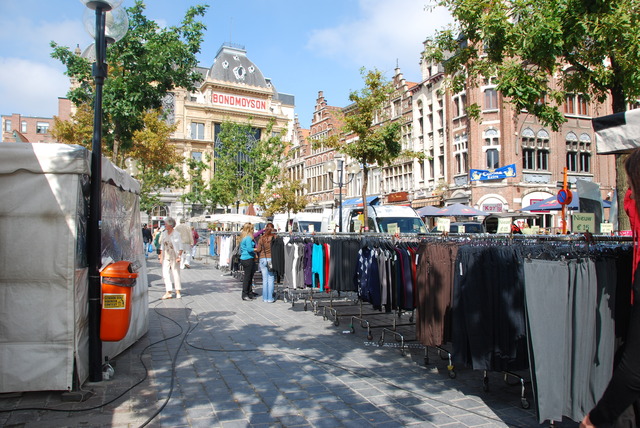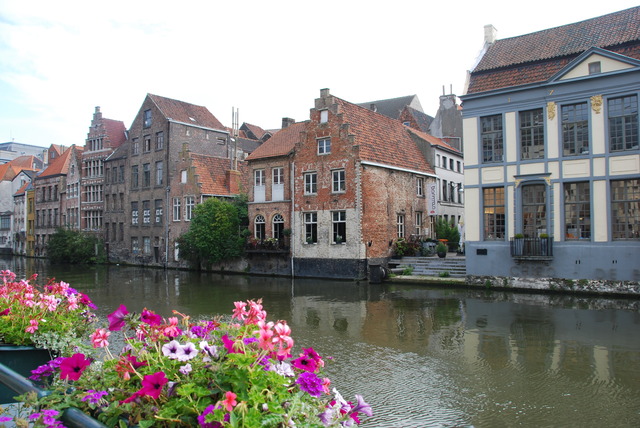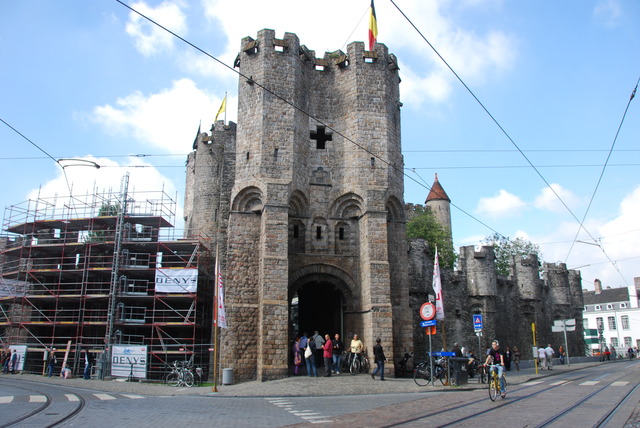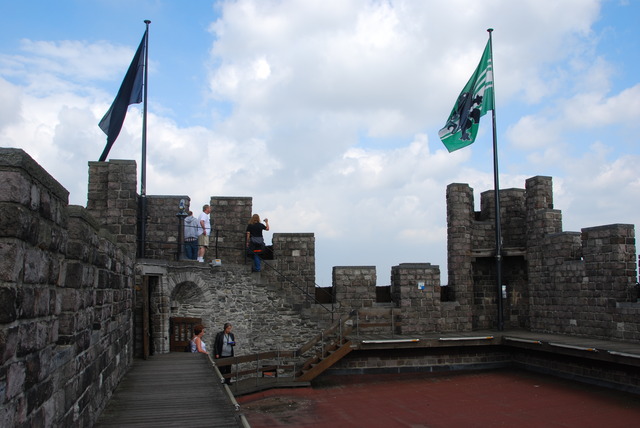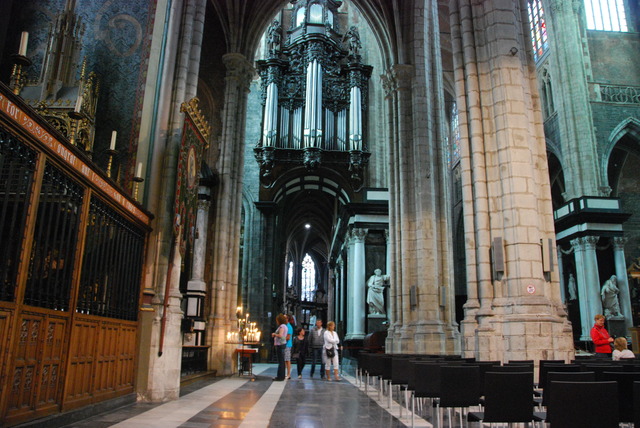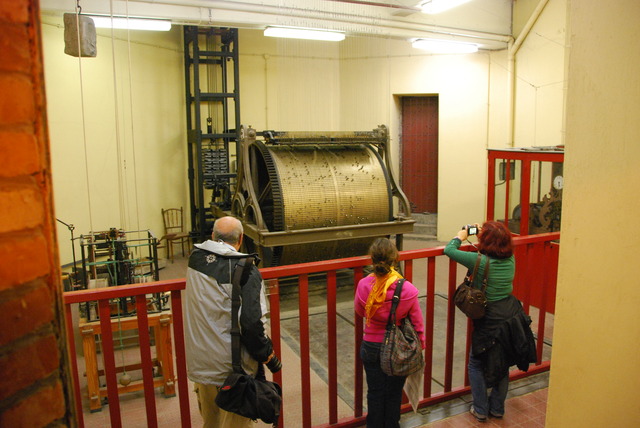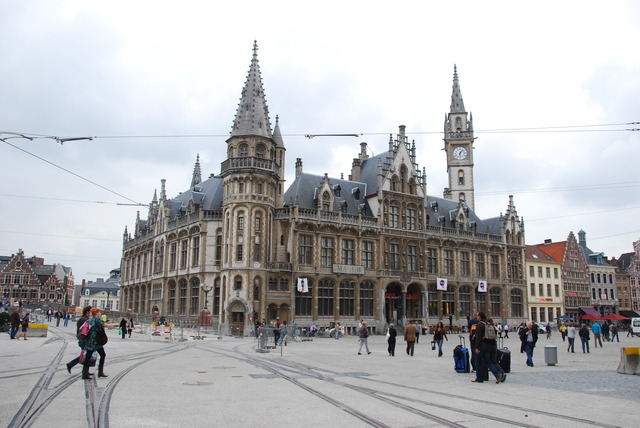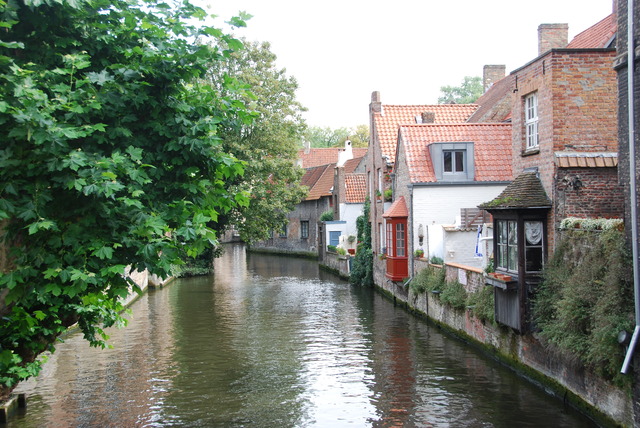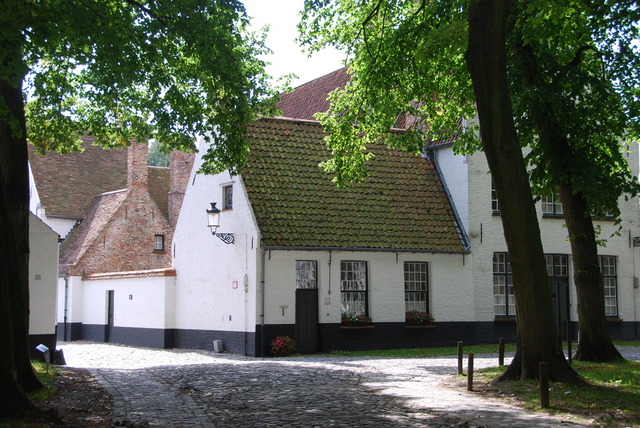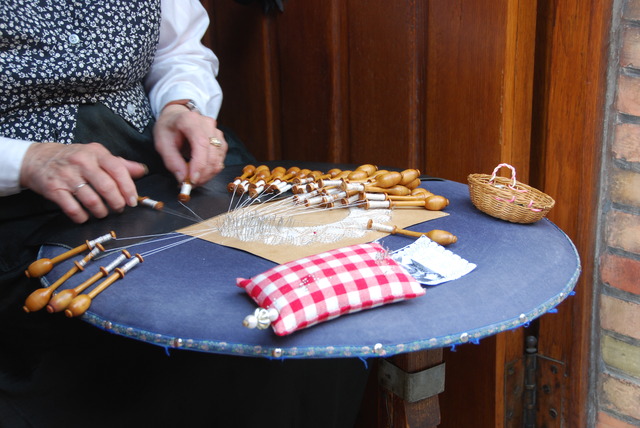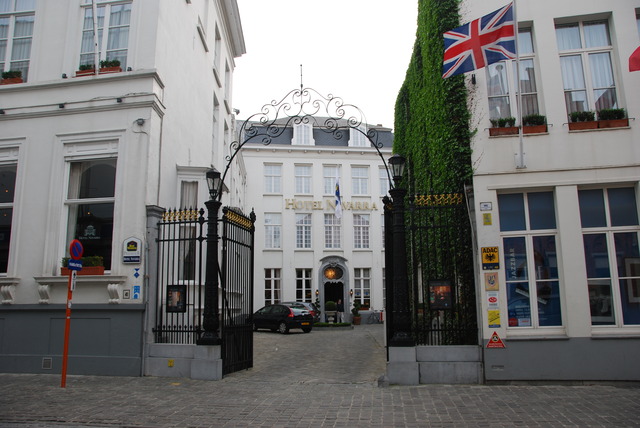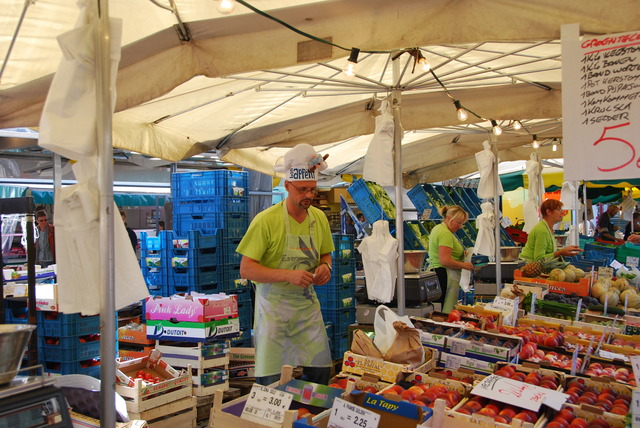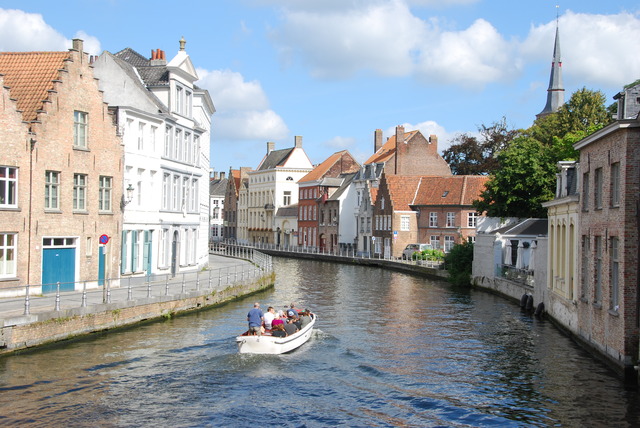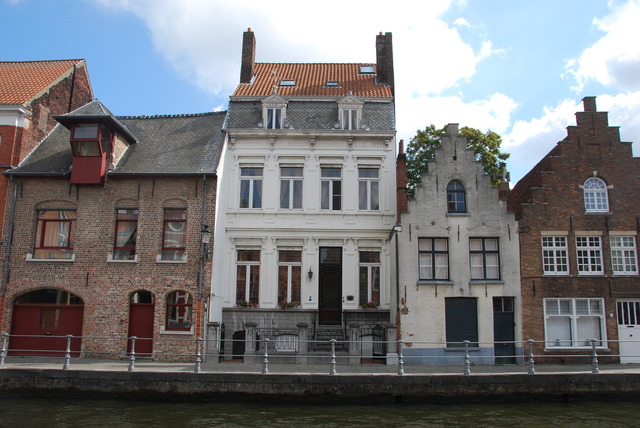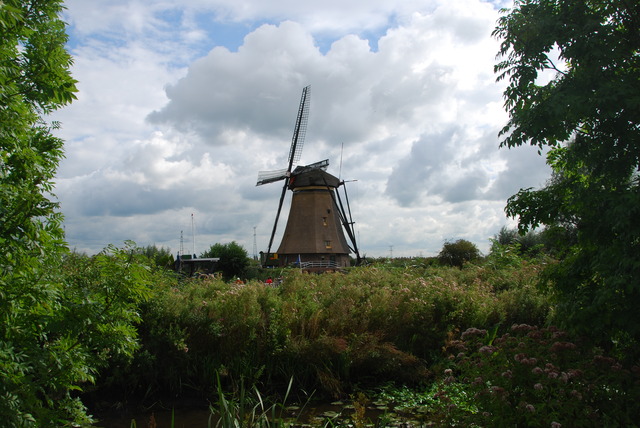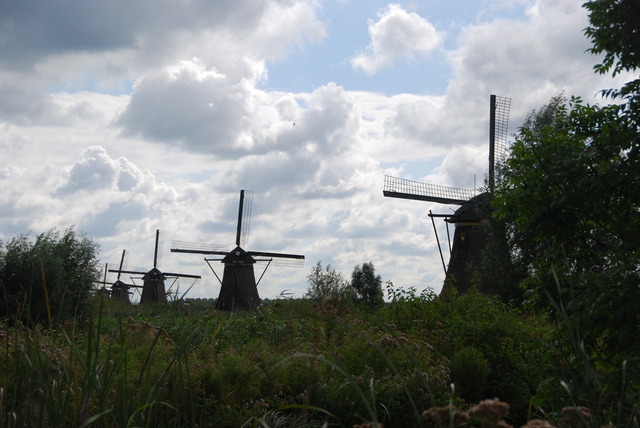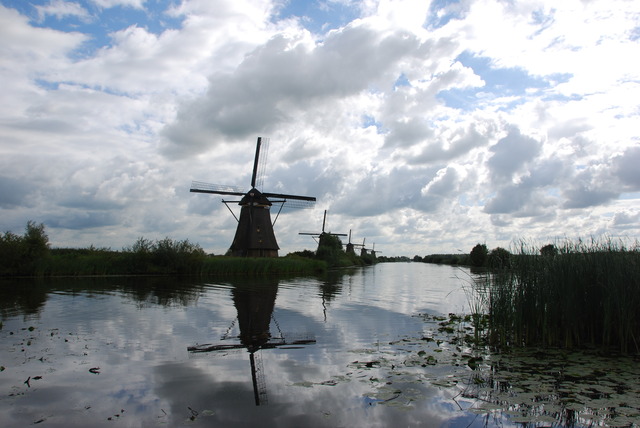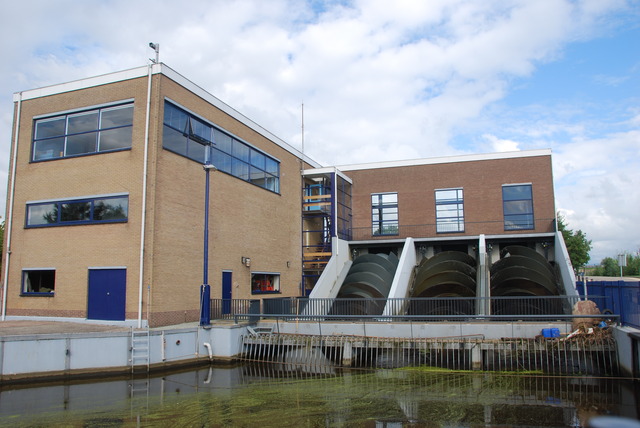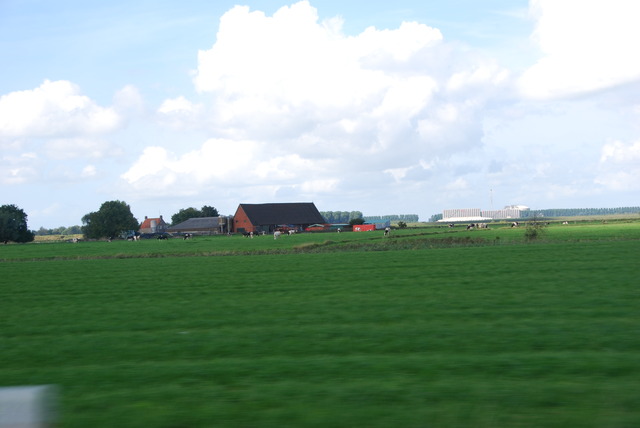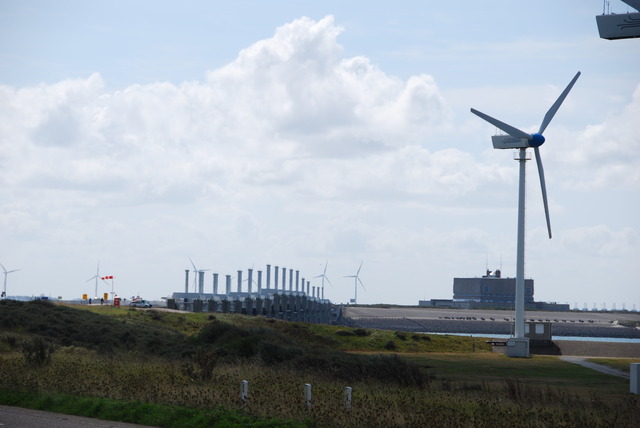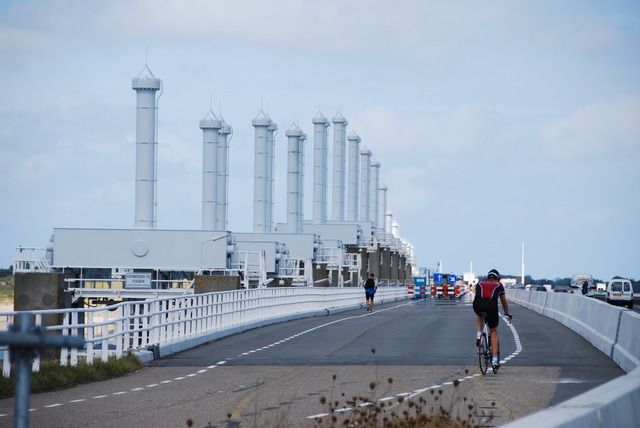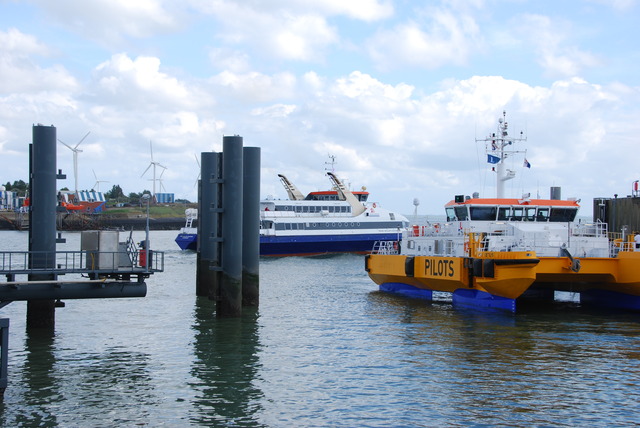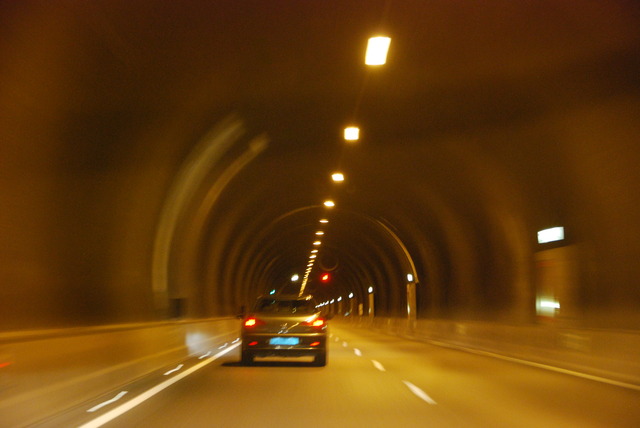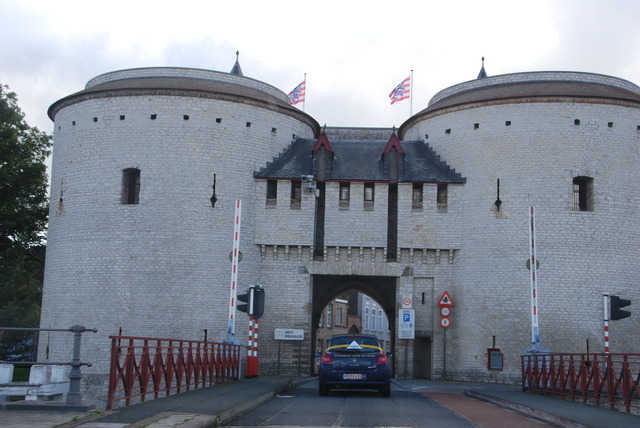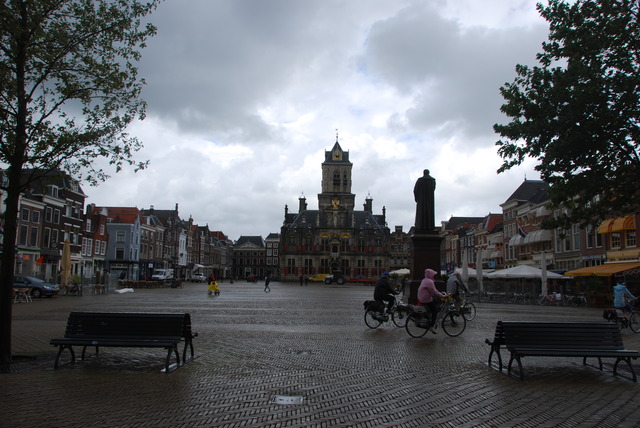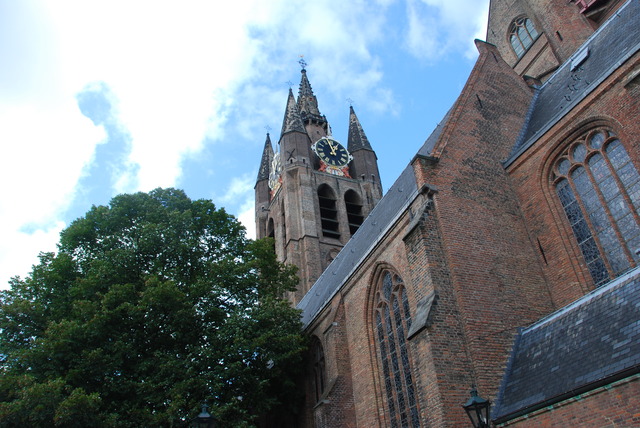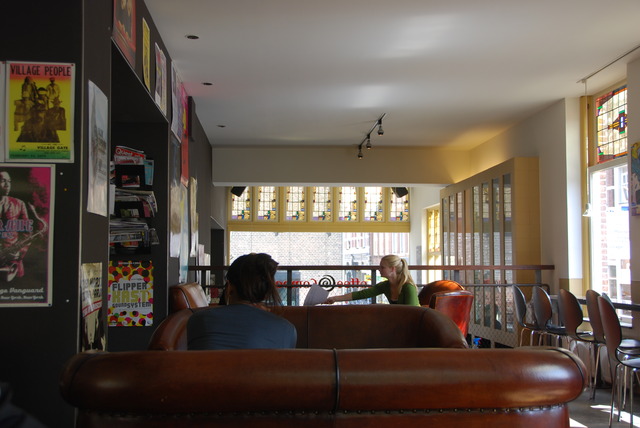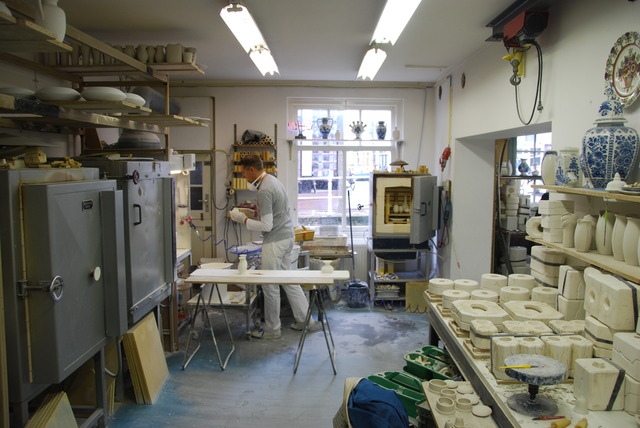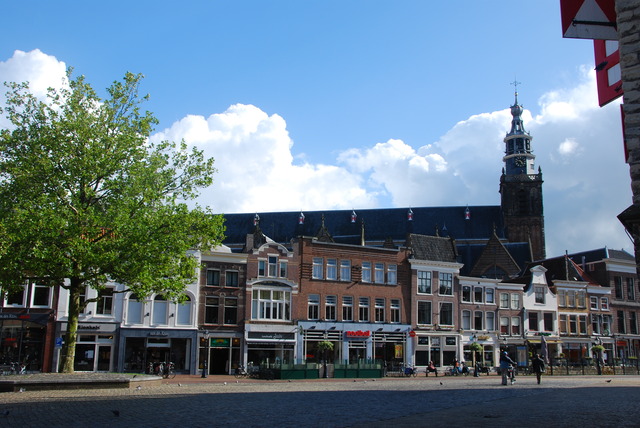September 3, Friday – cloudy & hazy and 15 degrees Celsius in the morning.
We were on the road by 11:00 AM and found our way out of Bruges and onto the A-10 Eastbound. The drive to Ghent, Belgium was under an hour, but finding the hotel took a while. We had looked up hotels last night on the Internet and found the NH Gent Belfort Hotel in the center of Ghent and it sounded pretty good.
The directions we had from the Internet said: “Follow the signs to ‘Gent Centrum’ then follow signs for Vrijdagsmarkt P1. Take the 3rd street on the roundabout: Belfortstraat. Hoteles on right, opposite Stathuis.” Sounded easy enough, but when I read the directions to Jeff as we were driving into Ghent, he said that he thought that “vrijdag” means Friday! Today was Friday and we wondered if that meant a Friday Market! It did! We got caught in market traffic and closed streets, but finally found the NH Gent Belfort Hoteles. Yes, that’s how they spell it! We parked the car and went into the modern lobby to register.
While we were driving into Ghent, we noticed that the city looked a bit gritty and old. We had read some good things about it, but now we weren’t so sure. Our hotel room # 261 immediately changed our opinion of Ghent! It was a huge room with a sitting area with a couch and chairs, a work area with a large desk, a king-sized bed, and still had lots of space to spare. The bathroom was also incredible! The entire bathroom and closet area measured about 15 ft. by 6 ft. A sliding door led first to a hallway lined with shelves and closets, like a walk-through closet. Two were hanging closets and the others had cube-like shelves. A Nespresso coffeemaker rested on one shelf with ready-to-make coffee pods. A steel safe and mini-bar took up a couple of other shelves, but there was still plenty of space for storage. On the left were two bowl-type sinks and opposite was a huge European bathtub. At the end of the long room was a glass-enclosed shower and to the right was a private section for a toilette. My description doesn’t do the bathroom justice. Neither do my photos! Please use your imaginations.
After we admired the room and bathroom, we went out to explore Ghent. The morning haze lifted and the sun was shining and it felt a little warmer. Ghent is an old city, and has many new modern buildings mixed in with the medieval ones. It didn’t feel like a tourist town with souvenir shops, but seemed to be full of locals and business people.
We walked down streets lined with old buildings and canals, and admired the architecture. I got into conversation with a young man who lives in Indianapolis, Indiana but who was originally from Bangalore, India. He was touring western Europe on a whirlwind two week vacation.
He told me his philosophy of travelling was similar to the lesson of the Parable of the Frog in the Well. The Frog lived in his well his entire life and thought that his well was the most beautiful and magnificent place in the world. He thought his water was the best and the most wonderful of all. One day he left his well and discovered the outside world and realized that his well was small and limited and not so wonderful. We both agreed that travelling was the best way to expand our personal worlds, see new things, and get to know other people.
 Julie’s House Bakery & Tea Shop
Julie’s House Bakery & Tea Shop
We stopped at a charming tea shop called Julie’s House and had a snack of tea & coffee and cheese cake.
Then we went to the “Castle of the Counts” called Gravensteen. It was rebuilt in 1180 by Philip of Alsace.
We took a self-guided tour of the castle and took photos. Besides the governor’s house, the castle was used as a prison for hundreds of years.
It looked like it was going to rain, so we hurried back to the hotel to take it easy and avoid the rain. We rested and went out again to see some of the sights in the central part of Ghent.
 St. Bavo’s Cathedral – wood & white marble pulpit
St. Bavo’s Cathedral – wood & white marble pulpit
We first visited St. Bavo’s Cathedral (Sint-Baafskathedraal). The exterior of the huge church is not impressive, but the interior is amazing and contains several true works of art. Visitors can see the original 12th century foundation in the underground crypt, but the main part of the cathedral was built in 15th century. The impressive Rococo-style pulpit was made of oak, gilded-wood, and white marble. There is a major painting by Rubens and the world famous series of panels by Hubert and Jan van Eyck which was completed in 1432.
We then walked across to the Belfry. It dates from 1313 and is the proud symbol of the city of Ghent’s independence. Belfrys were important during the Middle Ages because most people were illiterate and the bells chimed the hours of the day. The Cloth Hall was build onto the side of the Belfry in 1425. We entered and climbed up the circular staircase to the second floor and took the elevator to the top of the Belfry.
When we got off the elevator we saw an ancient mechanical clock and a gigantic cylindrical “music box”. As we were looking at them, the clock clanked and set off the cylinder to turn to play a tune. It was the ancient carillon! It was loud! But what fun to see it actually working!!
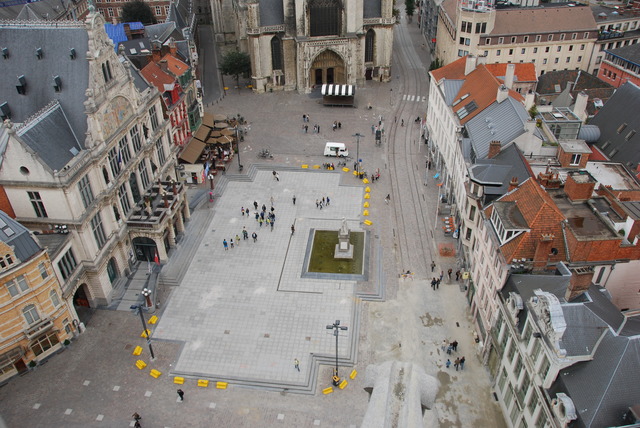 View from the top of the Belfry
View from the top of the Belfry
We found a place for dinner and ate a satisfying meal of waterzooie and tagliatelle with chicken. We had an enjoyable day in Ghent and were ready to move on.


